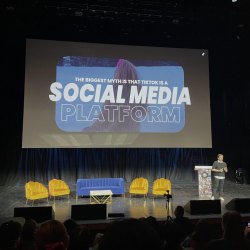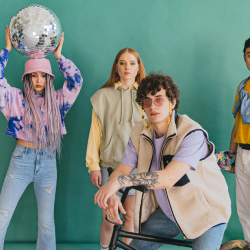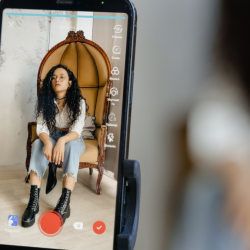Khaby Lame, Charlie D’Amelio, Bella Poarch…
Take one look at the most-followed accounts on TikTok today and it is clear that the balance of power in culture has irrevocably shifted. The mainstream idols that we have been sold for decades are slowly being replaced by a new generation of personalities who have emerged from community platforms like TikTok and YouTube. You will not find any of them on primetime TV or commercial radio, yet they hold huge amounts of influence over communities of millions online.
To put it in perspective: Khaby Lame has over 150 million TikTok followers, which is three times as many as Kylie Jenner and closer to thirty times as many viewers as Saturday night TV shows like Strictly.
The truth is that the idea of a single ‘mainstream’ pop culture was never reality — the appearance of there being one was merely a consequence of a monopoly on distribution. What has historically been presented as mainstream has only ever represented a small fraction of global culture. Now that distribution has started to flatten, the construct of the mainstream and its idols has begun to fall apart.
These outdated notions of cultural dominance have been exploded by the social internet. For the first time, young people are growing up with an experience of culture that has been predominantly shaped by algorithmic discovery. As a result, their encounters and understanding are much more tailored to their individual interests. From the contemporary manifestations of classic subcultural categories like goth and punk, right through to the more esoteric fringes of various aesthetics and -cores, people are finding contact with a network of niche interests and following them into more intimate community experiences.
As algorithms mature, even the notion of going viral has become a community concern: it no longer means the kind of cultural ubiquity experienced by early viral internet clips. Images and videos are going viral every day, achieving millions upon millions of views whilst still remaining unknown to anyone outside a particular community or niche.
In this environment, people are looking for personal meaning and relevance over widespread resonance. Consumers are not looking for brands with universal appeal, but rather those that understand the unique nuances of their own individual interests.
So how can brands forge meaningful relationships with these audiences?
Find the right communities
Audiences, like culture, are not a monolith. As much as it would make marketers’ jobs easier for them to fit into neat boxes, the reality is more complex. Instead, they are made up of a series of individual experiences and interests that overlap and intersect to create a system of distinct but connected communities.
Rather than trying to simplify audiences in order to fit one definition, brands need to understand the nuances of their consumers and the different communities they inhabit. It is only by finding these points of intersection and meeting their audiences where they are, in a language they understand, that they can meaningfully communicate with them. Red Bull, for example, has had great success tapping into the power of different communities, whether underground music or extreme sports.
Invest in them long-term
This can’t be a hit-and-run tactic. Audiences are attuned to hollow statements and disingenuous distractions. If brands are going to participate in communities and contribute to the discourse meaningfully, they need to be prepared to invest in creating long-term relationships.
This is about value exchange rather than extraction. The notions of authenticity, community and credibility are constantly bandied about, but if you don’t truly invest in the community and provide tangible value you will never be anything other than an annoyance at best, or an appropriator at worst. Corteiz, a brand that has emerged from the culture it promotes, understands the power of community-based initiatives and is currently reaping the rewards.
Give them ownership
A brand may be designed from within the business, but that’s not where it lives. It exists out in the world, in culture, and in contact with the audience. As the gap between brand and audience continues to diminish, brands need to reconsider these communities as creative collaborators and start ceding some control.
Communities can be extremely engaged and fiercely loyal, but only if they are invested. Nike has understood this since the days of Nike ID, and is building upon that idea with dotSwoosh. Involving them in the creation process from the beginning gives them ownership of the output. And after all, who knows what the audience wants better than the community themselves?
Featured image: Khaby Lame / tubefilter































